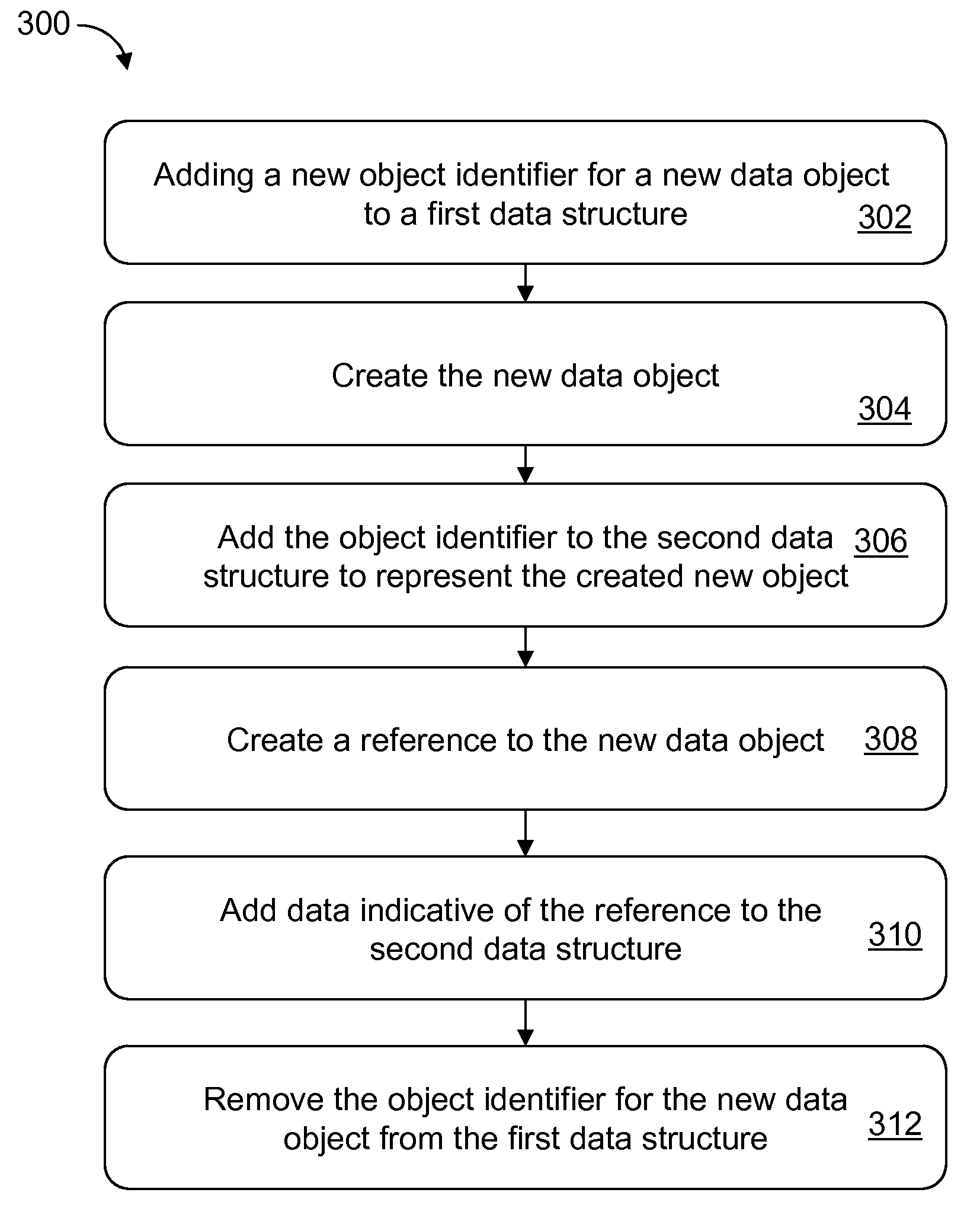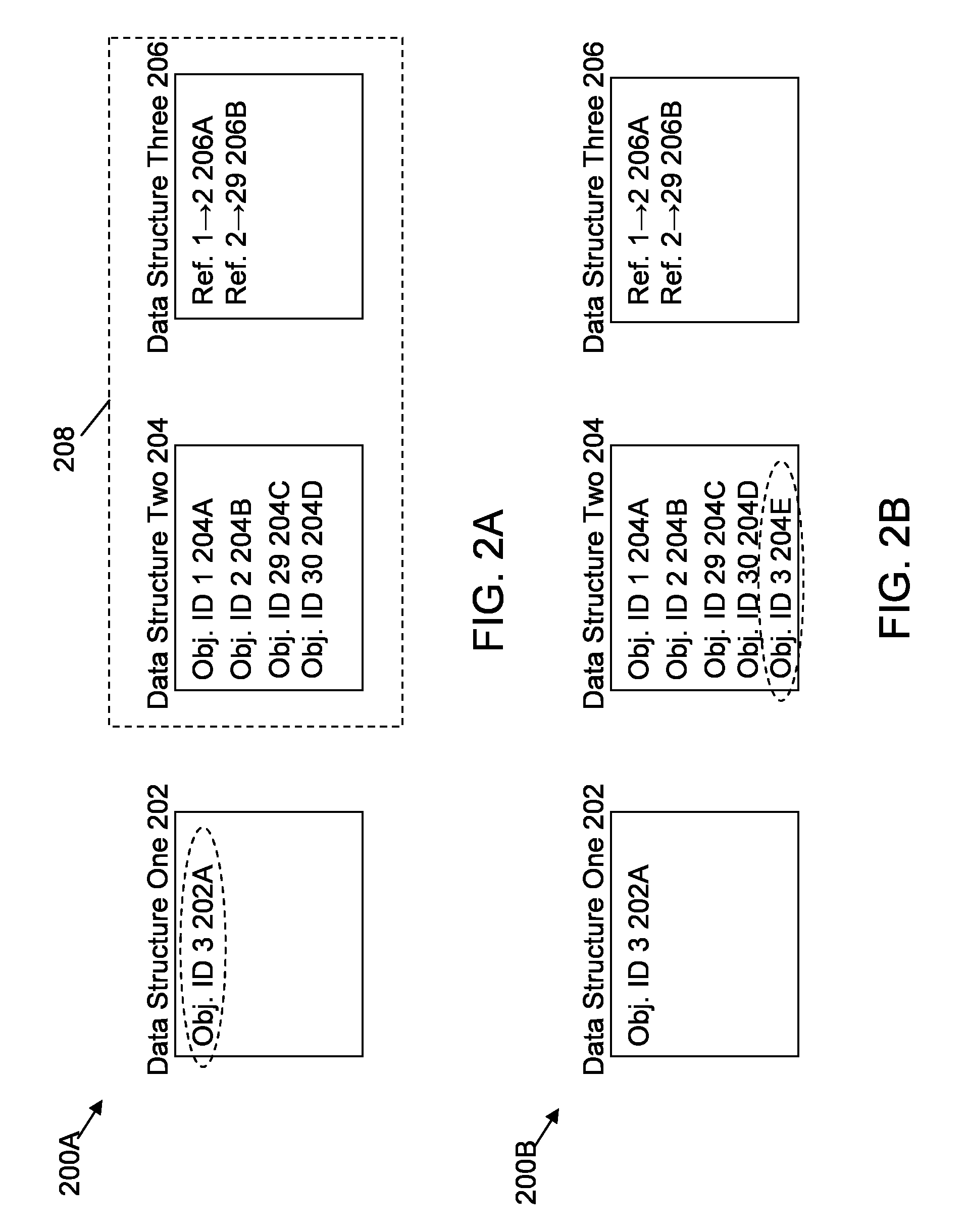Distributed garbage collection
a garbage collection and distributed technology, applied in the field of distributed garbage collection, can solve the problems of poor system utilization and performance, complicated garbage collection for distributed systems, and often more complicated garbage collection programs, so as to avoid messaging bottlenecks and achieve efficient and reliable garbage collection.
- Summary
- Abstract
- Description
- Claims
- Application Information
AI Technical Summary
Benefits of technology
Problems solved by technology
Method used
Image
Examples
Embodiment Construction
[0026]A distributed garbage collection data structure provides centrally located graph information for data objects in the distributed system. The distributed garbage collection data structure includes a transient data object list (e.g., data structure one) for storing unique object identifiers before they are added to the distributed system (e.g., to the centrally located data storage device). The distributed garbage collection data structure further includes a second data structure that stores information about the graph, including object identifiers for data objects in the distributed system and the relationship among those data objects. A garbage collection routine (or process) can use the distributed garbage collection data structure to ensure that only data objects appropriate for garbage collection are reclaimed.
[0027]The specification and / or figures describe(s) the techniques in terms of garbage collecting allocated memory. It is to be understood that the term “memory” is us...
PUM
 Login to View More
Login to View More Abstract
Description
Claims
Application Information
 Login to View More
Login to View More - R&D
- Intellectual Property
- Life Sciences
- Materials
- Tech Scout
- Unparalleled Data Quality
- Higher Quality Content
- 60% Fewer Hallucinations
Browse by: Latest US Patents, China's latest patents, Technical Efficacy Thesaurus, Application Domain, Technology Topic, Popular Technical Reports.
© 2025 PatSnap. All rights reserved.Legal|Privacy policy|Modern Slavery Act Transparency Statement|Sitemap|About US| Contact US: help@patsnap.com



